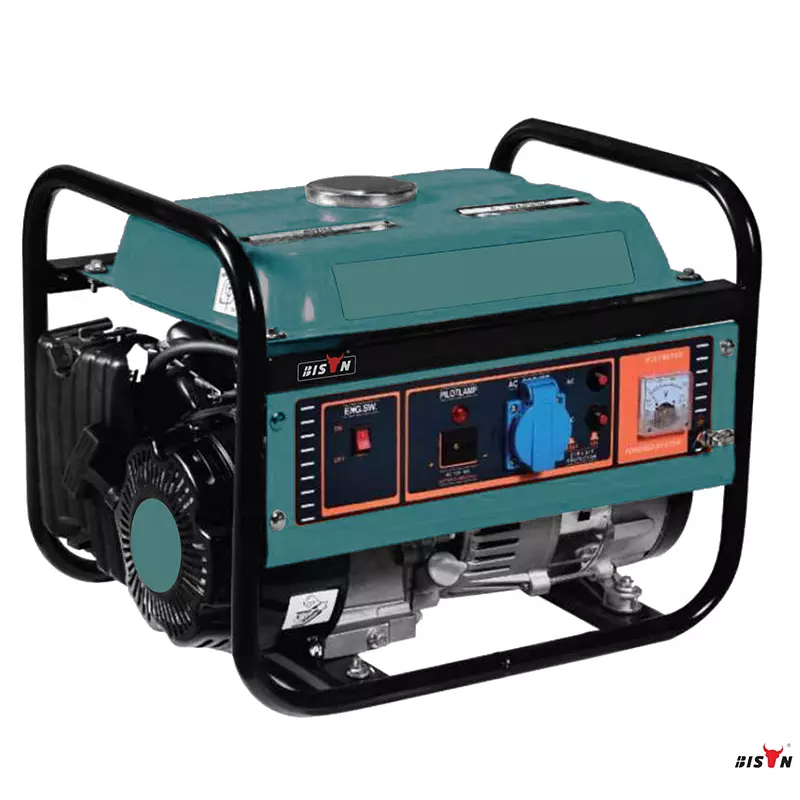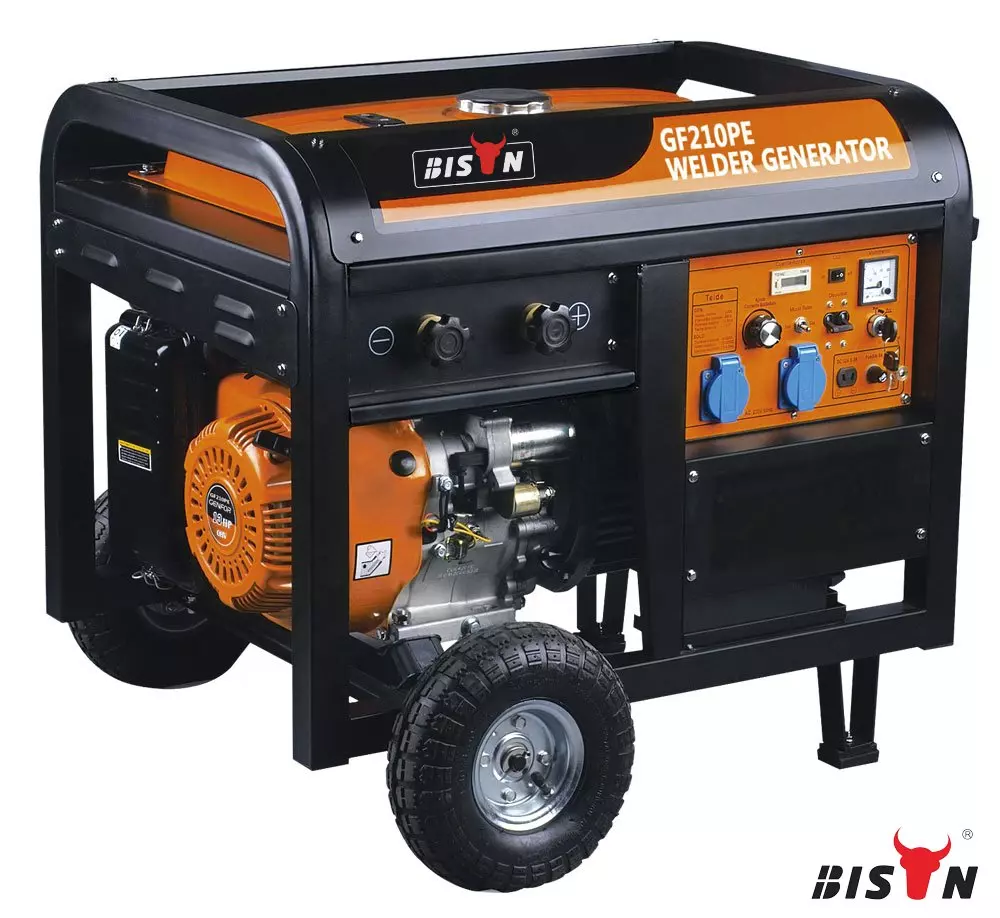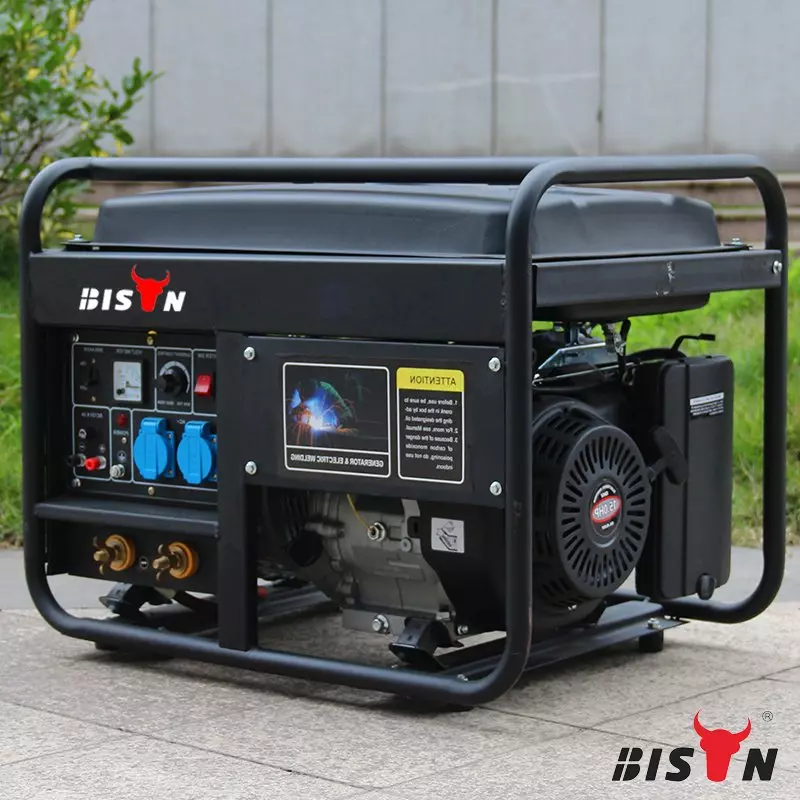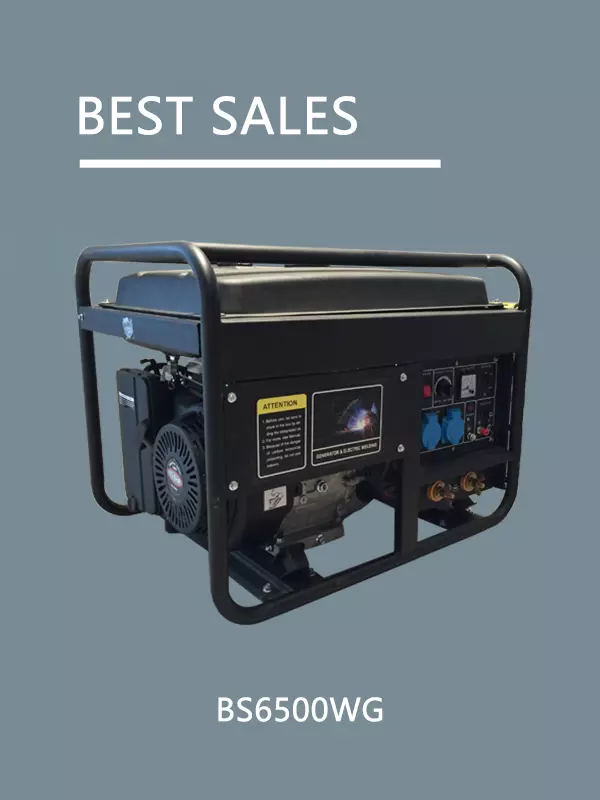Sometimes, the job site you are working on is without electricity, so you need a conventional generator to run the tools. And running out of power can be more difficult if you also need to complete your welding tasks.
At BISON, we offer a variety of generators for welding to give you the extra power you need. While you can use these for welding, you can also power other tools, such as work lights and grinders. Completing your projects became much easier with BISON’s generators for welding on a construction site or workshop.
What is a generator for welding?
These generators have an engine that generates electricity internally. The engine is powered by a fuel source such as diesel, gasoline, or liquid propane (LPG). They can power TIG welders, MIG welders, plasma cutters, grinders, fume extraction systems, fans, and other devices that require power when no means of power is available. They are common and used by manufacturers and metalworkers, usually outdoors, such as on construction sites, but can also be used indoors when electricity is unavailable.

Things to keep in mind before purchasing generators for welding
Welding is one of the few selective methods of fusing two types of metals. It is widely used in various applications and provides sufficient strength to the joint. However, welding requires a lot of electricity as it can only be done at very high heat levels, which can be achieved by providing a similarly powerful power source. This is achieved with specialized machines called generators for welding.
Since these devices depend entirely on electricity, they need to be plugged in to use them. Suppose you are looking for a stand-alone welder. In that case, you need to invest in a welder generator combo that can also provide the same power by converting the chemical energy of the fuel into electricity. This makes the device completely portable and suitable for construction sites without electrical connections. If you’re purchasing generators for welding, make sure you don’t miss out on the following features.
a) Design and weight
In almost every machine, a common characteristic can be observed, the more powerful the engine, the heavier it will be compared to other options. The design and weight of the generators for welding are no exception. It affects the overall power capacity as well as the portability of the device.
High-performance options do the job with greater precision and accuracy because you can adjust the output as needed and get the most out of the machine. However, these options are pretty heavy due to the added components. So if it meets your power requirements, it might be wise to opt for an underpowered and lightweight option, as it is highly portable.
b) Power output
Before purchasing, you must carefully consider the welding machine's power output and power input. The main reason behind this is that the welding you will be performing and the subject of your work require a certain temperature level, which can only be achieved with the right amount of power.
Now that you’re looking for generators for welding, you’ll also want to pay attention to the power capacity of the generator, as it should be able to provide the same output, whether it’s connected to a power source or generating electricity from fuel. With enough power from the generator, you can quickly get the job done without any issues.
c) Duty cycle
The duty cycle may be a familiar term if you’ve worked in manufacturing and machining for a while. Most fabrication-based devices, especially welding-based devices, have a dedicated duty cycle, expressed as a percentage.
The welder’s duty cycle can vary from 60% to 100%. In simple terms, the duty cycle represents the possible continuous activity time of the machine over 10 minutes. For example, if your device has a 60% duty cycle at a given voltage and amperage, you must rest the device for at least 4 minutes after 6 minutes or more of continuous use.
d) Noise level
Workshops and construction sites are already very noisy places. Many tools are operating at the same time, which creates a common loud noise. So you don’t want to add another noise device to the collection.
Loud noises can become very distracting after a certain level and can cause much discomfort in communication. Since the engine drives the generators for welding, a lot of noise is bound to be generated when powered by the generator. However, you can still avoid these issues by choosing the option that produces the least amount of noise. BISON’s generators for welding are the best as they make lesser noise.
e) Warranty
Warranty is a critical aspect of manufacturing and machining equipment. Unlike other electrical equipment, these tools are constantly forced against a hard surface to perform various operations such as grinding, cutting, welding, and more.
Therefore, the probability of damage to these tools is much higher than any other product. The same goes for generators for welding, as it has many critical internal components that are easily damaged in the event of a power surge or low oil level. A more extended warranty on your machine will safeguard against these problems because if your product is damaged during the warranty period, you will be able to request expensive repairs and replacements for your product free of charge.
f) Features
To save money, you should look for a product with all the features you need. However, if you have spare cash, it’s best to purchase something with more features than you need. The functions of the welder generator should suit your needs. The more features a product has, the higher the cost. If you can live without these features and save money, then do so.
g) Price
When buying a generator for welding, price is the next consideration. The price of an item depends on its quality and features, so make sure you don’t purchase cheap stuff just because it’s cheap! If you’re on a budget, you should be willing to sacrifice some of these extra features for affordability. If money is no object, you can spend more on a more expensive generator for welding that offers more unique features.
h) Material
The main thing you should consider is the material. A good generator for welding should be of long-lasting, durable, high-quality materials. You also need to ensure they are easy to clean and maintain longer. You should also make sure the material is safe to use. This will ensure that you don’t get any harmful chemicals that could damage your health.

Precautions for using generators for welding
a) Starting and shutting down
Always disconnect the welder’s power cord before starting or stopping the engine on the generator.
b) Fuel supply
Always ensure that the generator engine has a safe fuel supply and that the fuel lines are in good condition. When the welder is connected to the generator, the engine should not be allowed to run out of fuel.
c) Maintenance
Always keep the generator in good condition. Do not use generators that require repair or replacement.
d) Power extension cords
Do not use power cords of poor quality or require repair or replacement. Always use heavy-duty wire
Generators for welding price
The price of a generator for welding depends on many factors. If you’re interested in purchasing a generator for welding, contact BISON today.
BISON offers premium quality generators for welding for B2B importers and distributors worldwide. BISON is located in China and deals in the production and export of generators for welding and other kinds of generators and small engines.







